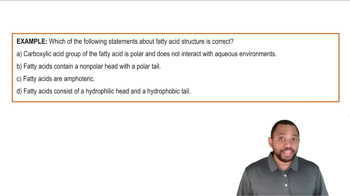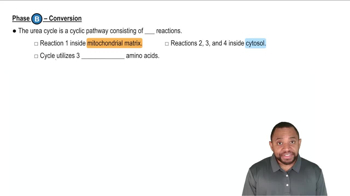How many molecules of acetyl-CoA result from complete catabolism of the following compounds?
a. Myristic acid, CH3(CH2)12COOH
 Verified step by step guidance
Verified step by step guidance Verified video answer for a similar problem:
Verified video answer for a similar problem:


 3:8m
3:8mMaster Total Energy from Fatty Acids Concept 1 with a bite sized video explanation from Jules
Start learning